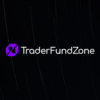Introduction
Welcome to the dynamic world of Forex trading, where the sun never sets on the market, and opportunities await around every global corner. The Forex market, with its staggering daily volume exceeding 6 trillion dollars, is the largest and most liquid financial market in the world. For traders, investors, and financial enthusiasts, understanding the intricacies of Forex market hours is not just beneficial—it’s crucial for success.
But why are Forex market hours so important, you might ask? The answer lies in the unique structure of the market itself. Unlike traditional stock markets, which operate within strict hours, the Forex market is a decentralized network of computers and brokers from around the world. It’s open 24 hours a day, five days a week, catering to the continuous flow of currency exchange that follows the sun across time zones from Sydney to Tokyo, London to New York.
In this comprehensive guide, we’ll delve into the significance of Forex market hours, how they can affect your trading strategy, and why they could be the key to unlocking greater trading potential. Whether you’re a seasoned trader or just starting out, understanding when to trade can be just as important as knowing what to trade. We’ll explore the four major Forex exchanges, dissect the overlap of market sessions, and provide you with the insights needed to identify the best times to engage in the market for maximum efficiency.
By the end of this article, you’ll have a clearer understanding of Forex market hours, an appreciation for the rhythm of global trading sessions, and a toolkit of strategies to help you trade smarter, not harder. So, let’s turn the page and start our journey into the world of Forex market hours, where timing is not just a convenience—it’s your strategy.
The Fundamentals of Forex Market Hours
The Forex market is a continuous relay of trading sessions, a global baton pass through the major financial centers in New York, London, Tokyo, and Sydney. It’s a market that never sleeps, with currencies traded 24 hours a day, five days a week. Understanding the fundamentals of Forex market hours is the first step in harnessing the potential of this relentless trading space.
Unlike traditional markets, the Forex market operates on a 24-hour basis. This is due to the global nature of the economy, where there is always a trade somewhere in the world as different countries wake up and begin business for the day. The market opens at 5 p.m. EST on Sunday in Sydney, Australia, where it begins its journey across the globe, closing at 5 p.m. EST on Friday in New York.
This round-the-clock trading feature allows investors from all over the world to trade during normal business hours, after work, or even in the middle of the night. However, not all hours of the day are equally good for trading. The best time to trade is during the hours when the market is most active and therefore has the highest volume of trades.
Market overlaps occur when two trading sessions are open at the same time. These periods are the busiest and best times to trade because high activity means bigger opportunities in currency prices. The most significant overlap in the market is between the London and New York sessions, especially for currency pairs that involve the euro, British pound, or Swiss franc.
The opening and closing times of these markets also have a direct impact on liquidity and volatility. The highest liquidity is when more than one of the four markets are open simultaneously. For example, when the London market is winding down with the New York market opening, you can see some of the most significant movements in currency pairs involving the US dollar and the euro.
Forex Market Sessions Explained
The Forex market is divided into three main trading sessions: the Asian, European, and North American sessions. These sessions correspond to the key international financial markets and their opening hours, which are influenced by the time of day and the part of the world in which trading is taking place. Understanding these sessions is vital for traders looking to capitalize on periods of high activity in the market.
The Asian Session
- Opening Times: The Asian session officially begins with the Sydney market opening at 5:00 pm EST and continues with Tokyo at 7:00 pm EST.
- Key Financial Centers: Tokyo, Hong Kong, and Singapore are the primary financial centers during the Asian session, with Tokyo being the third-largest trading center globally.
- Characteristics: The Asian session is known for its steady and methodical trading pace, which can be attributed to the strong influence of the Bank of Japan. Currency pairs involving the Japanese yen (JPY) are highly traded during these hours. The session is also significant for the Australian (AUD) and New Zealand (NZD) dollars.
The European Session
- Opening Times: The European session kicks off with the London market at 3:00 am EST, followed by other European markets like Frankfurt and Paris.
- Key Financial Centers: London is the hub of the European session, which is the most volatile session due to the volume of transactions that take place.
- Characteristics: This session is marked by a sharp increase in trading activity and volatility, especially in the early hours when it overlaps with the tail end of the Asian session. The euro (EUR), British pound (GBP), and Swiss franc (CHF) are particularly active during these hours.
The North American Session
- Opening Times: The North American session is dominated by New York, beginning at 8:00 am EST and closing at 5:00 pm EST.
- Key Financial Centers: New York is the main player, but other North American markets like Toronto and Chicago also contribute to trading volume.
- Characteristics: This session is characterized by significant movements in the North American currencies, particularly the U.S. dollar (USD) and the Canadian dollar (CAD). The session also sees increased action as it overlaps with the European session in the morning hours.
Inter-Session Overlaps
The most important overlaps occur between the Asian and European sessions between 3:00 am and 4:00 am EST, and between the European and North American sessions from 8:00 am to 12:00 pm EST. These periods are characterized by high liquidity and can often lead to significant movements in the market, presenting opportunities for traders to capitalize on quick gains due to the increased volatility.
Strategic Trading in Different Sessions
Traders often prefer certain sessions based on their trading style and the currency pairs they choose to trade. For example, those who trade the EUR/JPY may find the overlap between the Asian and European sessions to be the most lucrative time to trade. Conversely, traders interested in the USD/CAD pair may prioritize the overlap between the European and North American sessions.
The Optimal Times for Forex Trading
As the world spins on its axis, so do the wheels of the Forex market, with currency traders finding their fortunes in the ebb and flow of market hours. The quest for the optimal time to trade is akin to a surfer seeking the perfect wave—it’s all about timing and rhythm.
The crescendo of activity in the Forex market reaches its peak when the London session, bustling with its traders, overlaps with the New York session, where big players step into the game. This period, stretching from 8:00 am to 12:00 pm EST, is when the market’s pulse quickens. It’s a time when liquidity surges, spreads tighten, and currency pairs dance to the tune of bustling trade—creating a trader’s symphony.
Liquidity and Volatility
Imagine a sea of traders, each waiting for the tide to turn. Liquidity is that high tide, offering smooth sailing for trades with ample volume to match buyers with sellers discreetly. Volatility, however, is the wave that seasoned surfers—traders, in our metaphor—seek. It brings the highs and lows that can be ridden for profit, though not without risk. Midweek, particularly, is when these waves crest, often spurred by the ripples of economic news releases that send prices soaring and plummeting.
Session Overlaps
In the quiet hours of the Asian morning, as the session there winds down, the European session awakens. Between 2:00 am and 4:00 am EST, a window opens—a brief period where the two markets overlap. It’s a time of transition, where the momentum of the Asian market’s closing trades can set the stage for the opening acts of the European session.
The most significant overlap, however, is the European-North American handover. The market is abuzz from 8:00 am to 12:00 pm EST, as traders from both sides of the Atlantic dive into the market’s depths. This is the window of opportunity where the largest volume of trades occurs, and the movements of currency pairs are most pronounced.
Adjusting to Market Hours
For traders around the globe, these peak hours are a beacon, guiding them to adjust their schedules. A trader in Asia might find themselves sipping coffee at midnight, eyes glued to the screen, waiting for the European market to stir. Meanwhile, their counterpart in Europe might be setting alarms for the break of dawn, eager to catch the wave of the Asian session’s closing moves.
The key is synchronization—aligning one’s trading strategy with the market’s heartbeat. Whether it’s setting an alarm for an economic announcement or timing a trade to coincide with the influx of liquidity, success in Forex trading is often a matter of being in the right place at the right time.
Practical Tips for Forex Market Sessions
As traders navigate the Forex market’s global theater, they must act with both the precision of a strategist and the wisdom of a sage. The market’s continuous cycle demands not only an understanding of the sessions but also a set of practical tips to maneuver through them with finesse.
1. Embracing the Rhythm of the Market
The Forex market, with its trio of trading sessions, sings a complex melody. Traders must learn this rhythm to harmonize their strategies with the market’s tempo. It’s about recognizing the unique characteristics of each session and adapting one’s approach accordingly. For instance, the Asian session might call for a more measured strategy, reflecting its more methodical pace, while the European session could invite bolder moves in response to its heightened volatility.
2. Harnessing the Power of Overlaps
The overlaps are the crescendos in the Forex symphony, where liquidity and movement reach their zenith. A trader must be attuned to these moments, ready to act when the market’s chorus swells. The Asian-European overlap might offer the first taste of action, but it’s the European-North American overlap that brings the day’s main event. This is the time to be most alert, to place trades with the confidence that comes from a market flush with activity.
3. Adjusting to Market Hours
In the global dance of Forex trading, not everyone hears the same music at the same time. A trader in one time zone may need to adjust their schedule to catch the market’s prime hours. It could mean trading in the quiet of pre-dawn hours or the solitude of late nights. Technology, with its alarms and alerts, serves as a trusty companion in this endeavor, ensuring that one never misses the market’s call.
4. Economic Calendars
An economic calendar is an indispensable tool for the Forex trader. It’s a guide to the market’s ebbs and flows, signaling when the tides of economic announcements might surge and sway currency values. By aligning trades with these events, a trader can ride the waves of market reaction.
5. Risk Management
Even as the market offers opportunities, it also holds peril. Risk management is the anchor that prevents a trader’s strategy from being lost in rough waters. It’s about setting stop-loss orders to safeguard against the market’s sudden squalls and knowing when to hold back, preserving capital for the next day’s trading.
6. Continuous Learning
The final tip for navigating the Forex market sessions is a commitment to continuous learning. The market is a teacher that constantly challenges its students. By staying informed, seeking out new strategies, and reflecting on both wins and losses, a trader grows wiser with each session.
In Conclusion
As our journey through the intricate world of Forex market hours and sessions draws to a close, we reflect on the profound insights gained. The Forex market, with its unceasing pulse and global reach, offers a landscape rich with opportunity for those who can skillfully navigate its rhythms.
Understanding the ebb and flow of Forex market hours is not merely a matter of knowledge—it’s the art of timing one’s actions to the market’s ceaseless tides. The Asian, European, and North American sessions each present their own unique waves of activity, and within their overlaps lie the most fertile moments for trading.
We’ve traversed the terrain of peak trading hours, delved into the liquidity and volatility that characterize the market, and offered practical tips to align your trading strategy with the global clock. The importance of adjusting to market hours, regardless of your geographic location, cannot be overstated—it’s the difference between catching the market wave or being caught off guard.
Remember, the Forex market is a domain of both chance and skill. It rewards the prepared, the informed, and the disciplined. By respecting the power of market hours and sessions, you can position yourself to take advantage of the opportunities they unveil.
As you continue to engage with the Forex market, let the knowledge of market hours be your guide, the economic calendar your compass, and risk management your anchor. With these tools, you’re well-equipped to sail the Forex seas, to trade with confidence, and to turn the market’s complex symphony into a harmonious profit melody.








